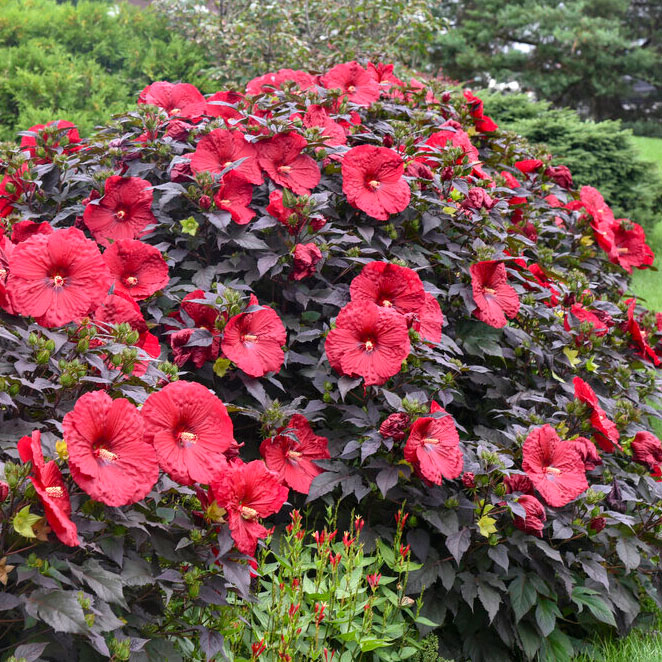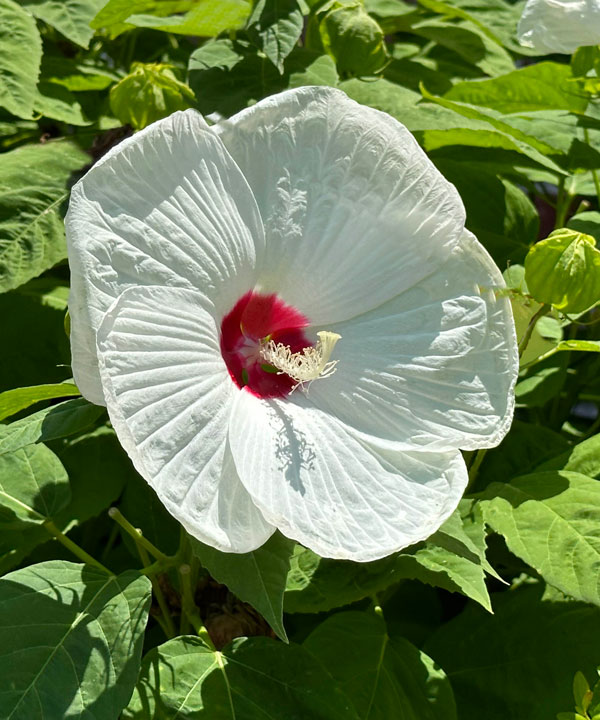Stunning in summer
I was about 12. It was the Christmas holidays, and my seed catalogs had just started arriving. I turned the page and there were the Mallow Marvels – gigantic flowers some guy was holding in his two hands. They were as big as his head!
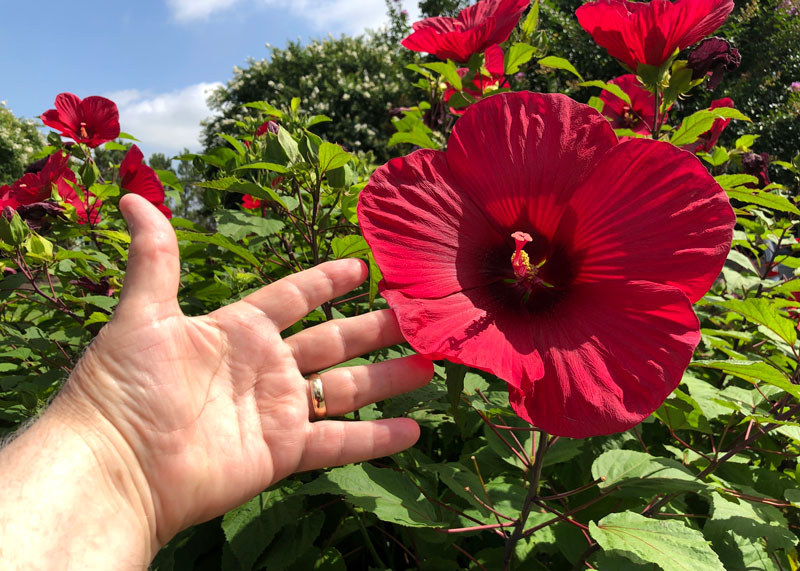
What 12-year-old boy isn’t going to love a red, white, or pink flower the size of a guy’s head? I bought my seeds, planted them in my greenhouse, and sure enough, by summer, my plants were blooming. The size of my head. And unlike my other hibiscuses, these plants were going to come back after the winter – they were truly perennial.
Jump ahead by a bunch of years. I was on a local Facebook page in our hometown last Saturday night watching the runoff results, and one post stood out from the rest. It wasn’t political.

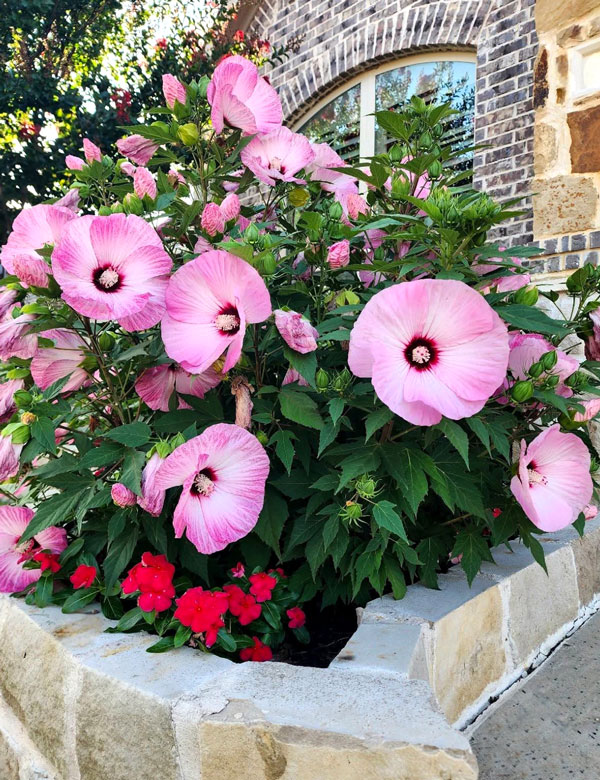
Facebook photos by Marcus Bowie of McKinney TX. Summerific Candy Crush hardy hibiscus.
Marcus Bowie of McKinney had posted a couple of photos of his Summerific Candy Crush hardy hibiscus and people were loving it. I got his permission to re-post it here. This is his own landscape. His own plant. Not some publicity photo. Proven Winners definitely has a great one with this one. Marcus told FB readers he just gave it great soil from the outset and regular feedings with a water-soluble fertilizer.
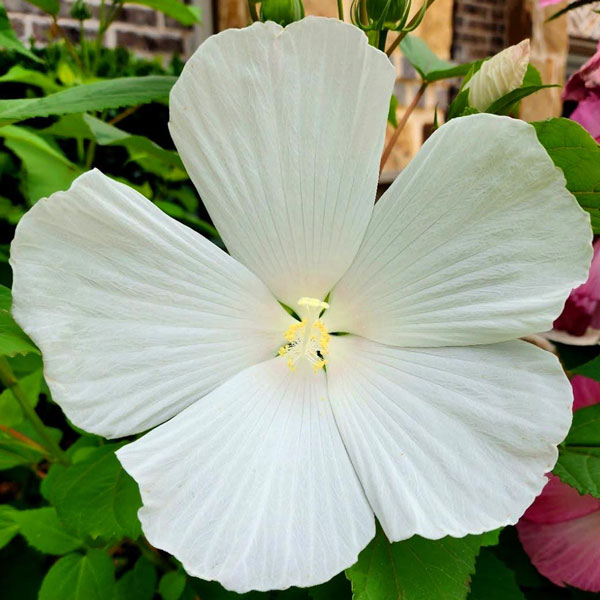
So, I decided just to put up a few of my own photos I’ve taken over the years as well as a couple I pulled from Internet sources. I do so to encourage you to include one or two of these in your landscape.
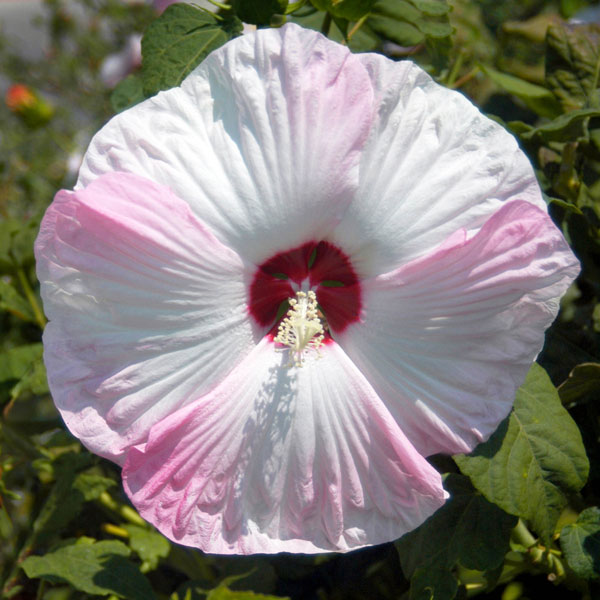
Breeders are working diligently to bring us unusual colors, flower forms, reduced plant heights, increased flower production, reddish foliage, and other desirable improvements. This is a great time to be shopping for them in a garden center near you.
Things to know about hardy hibiscus…
• Where in Texas are they suited? Anywhere!
• Best sun exposure: Full sunlight all day.
• Soil preparation: Add several in. of organic matter along with 1 in. of expanded shale. Rototill to 10-12 in.
• Spacing: Depending on variety and mature size, 36-42 in. apart.

• Position in perennial garden: Because of height and bold texture, these work best toward the back of the bed.
• Water needs: Consistently moist. As a group, mallows are native to wetlands, even swampy conditions. Because of their large leaves and flowers, they do not hold up well to dry soils.
• Fertilizer: Water-soluble, high-nitrogen fertilizer weekly spring into early summer. Begin to slack off as plants stop blooming in late summer and into fall.
• Winter care: Nothing special. Plants will die to the ground with first killing freeze, but they will come back up the next spring. Cut the stalks down to 1-2 in. after the first freeze and leave them just to mark where they’re planted.
• Propagate: Dig and divide in late fall or very early spring, but don’t cut plants into too many pieces or you’ll risk losing them all.
• Pest problems: Susceptible to cotton root rot in alkaline soils just as its sister, cotton. Best way to deal with it is to incorporate organic matter generously into the soil prior to planting. Even then CRR will occasionally kill hardy hibiscus plants suddenly.

